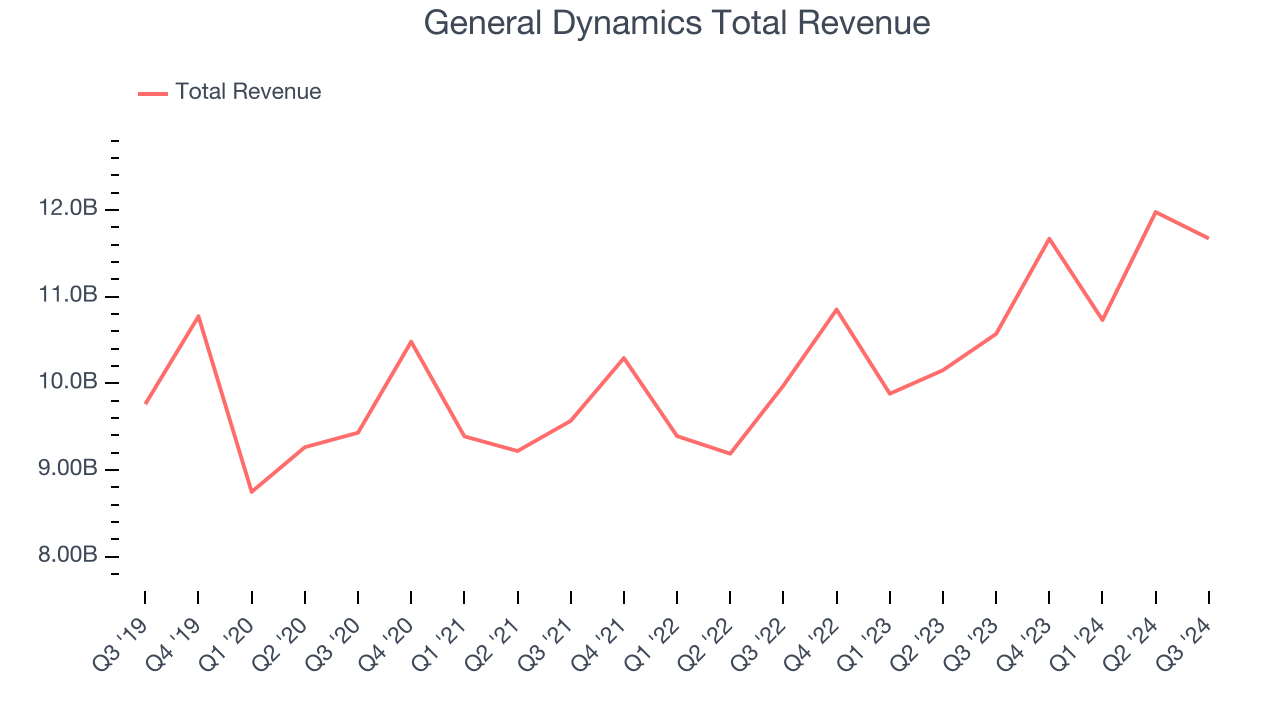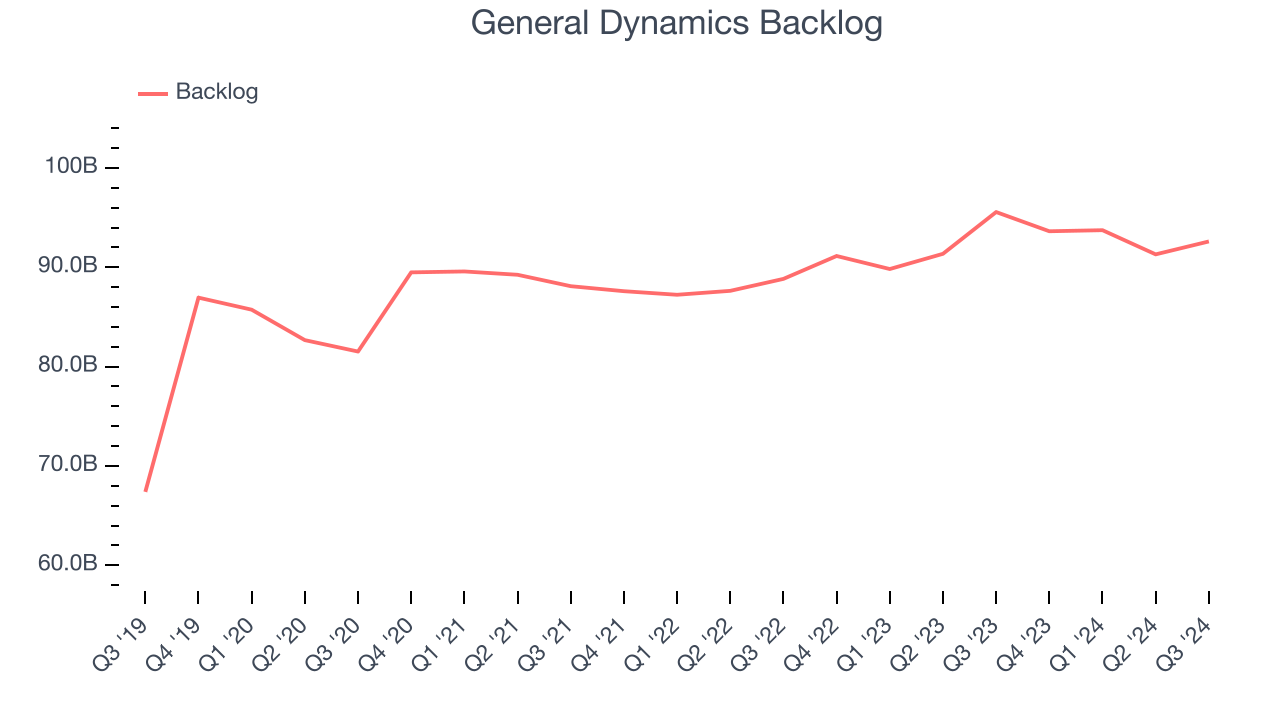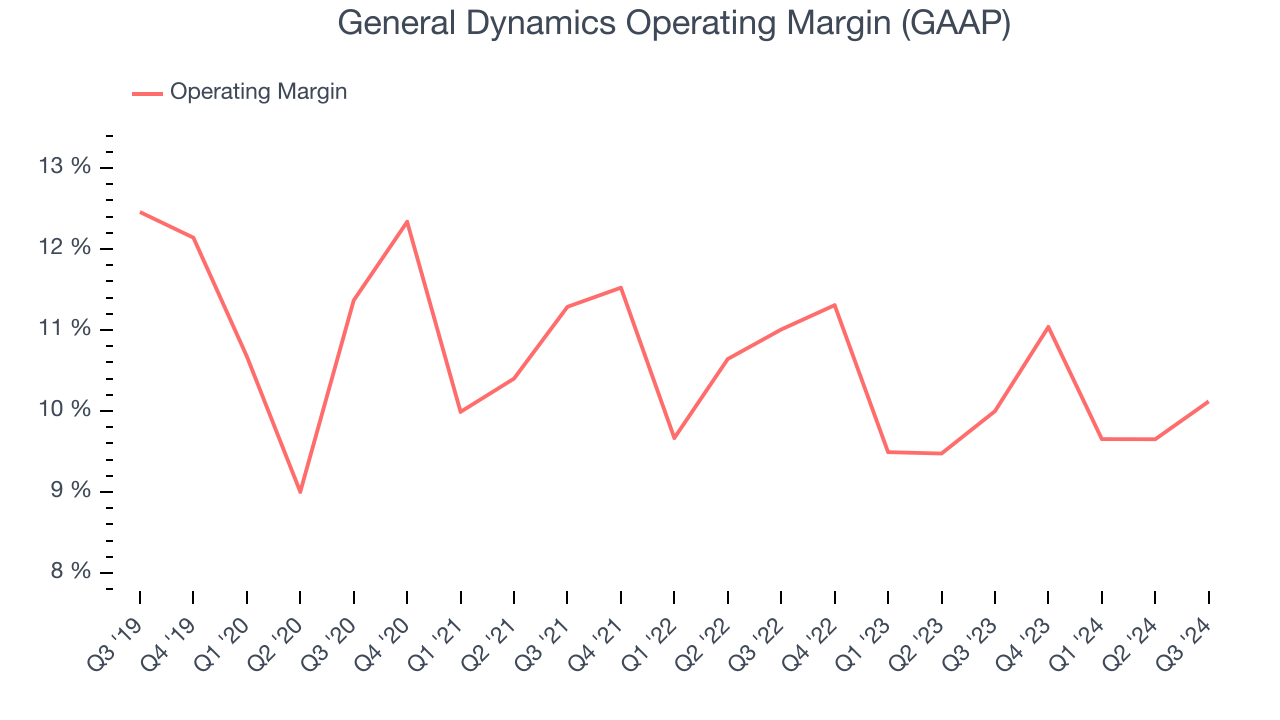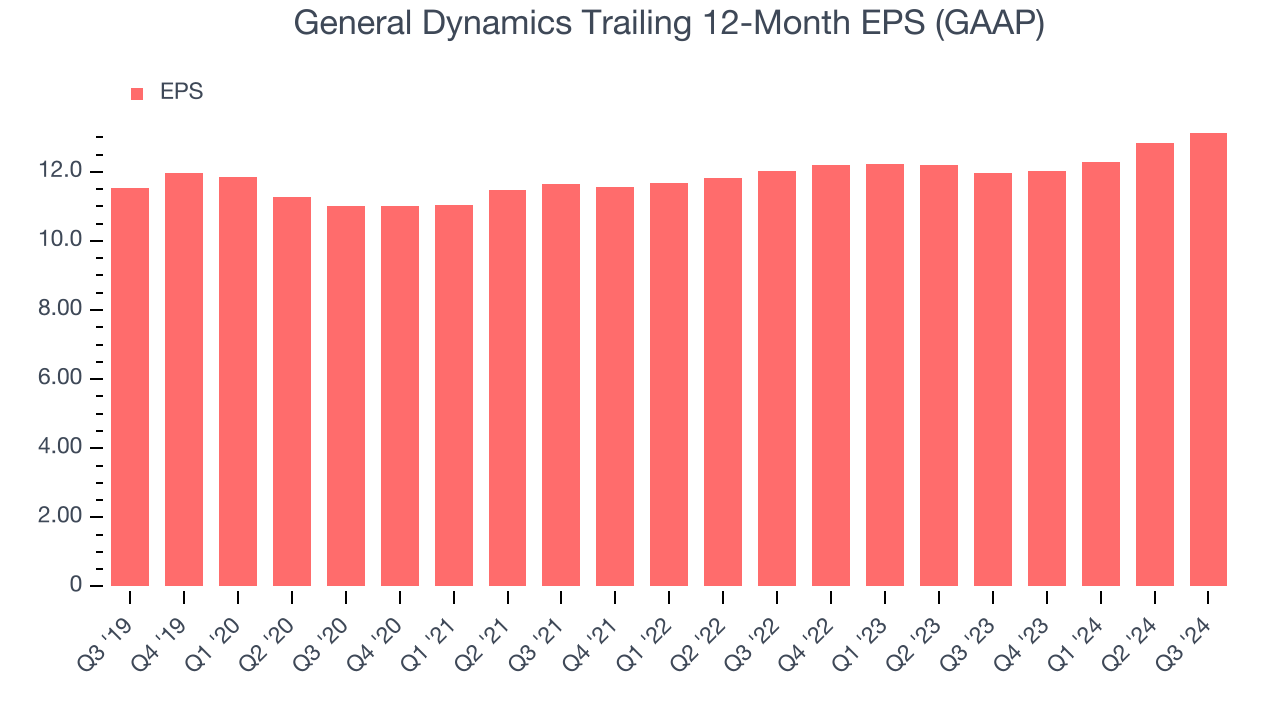
Aerospace and defense company General Dynamics (NYSE:GD) met Wall Street’s revenue expectations in Q3 CY2024, with sales up 10.4% year on year to $11.67 billion. Its GAAP profit of $3.35 per share was 4.6% below analysts’ consensus estimates.
Is now the time to buy General Dynamics? Find out by accessing our full research report, it’s free.
General Dynamics (GD) Q3 CY2024 Highlights:
- Revenue: $11.67 billion vs analyst estimates of $11.76 billion (in line)
- EPS: $3.35 vs analyst expectations of $3.51 (4.6% miss)
- Free Cash Flow Margin: 10.4%, similar to the same quarter last year
- Backlog: $92.6 billion at quarter end, down 3.1% year on year (slight miss vs. expectations of $93.1 billion)
- Market Capitalization: $83.94 billion
"The company continues to see strong growth and steady improvement in operating performance," said Phebe Novakovic, chairman and chief executive officer.
Company Overview
Creator of the famous M1 Abrahms tank, General Dynamics (NYSE:GD) develops aerospace, marine systems, combat systems, and information technology products.
Defense Contractors
Defense contractors typically require technical expertise and government clearance. Companies in this sector can also enjoy long-term contracts with government bodies, leading to more predictable revenues. Combined, these factors create high barriers to entry and can lead to limited competition. Lately, geopolitical tensions–whether it be Russia’s invasion of Ukraine or China’s aggression towards Taiwan–highlight the need for defense spending. On the other hand, demand for these products can ebb and flow with defense budgets and even who is president, as different administrations can have vastly different ideas of how to allocate federal funds.
Sales Growth
A company’s long-term performance can give signals about its business quality. Even a bad business can shine for one or two quarters, but a top-tier one grows for years. Regrettably, General Dynamics’s sales grew at a sluggish 3.4% compounded annual growth rate over the last five years. This shows it failed to expand in any major way and is a rough starting point for our analysis.

Long-term growth is the most important, but within industrials, a half-decade historical view may miss new industry trends or demand cycles. General Dynamics’s annualized revenue growth of 8.9% over the last two years is above its five-year trend, suggesting some bright spots.
We can dig further into the company’s revenue dynamics by analyzing its backlog, or the value of its outstanding orders that have not yet been executed or delivered. General Dynamics’s backlog reached $92.6 billion in the latest quarter and averaged 2.8% year-on-year growth over the last two years. Because this number is lower than its revenue growth, we can see the company fulfilled orders at a faster rate than it added new orders to the backlog. This implies General Dynamics was operating efficiently but raises questions about the health of its sales pipeline. 
This quarter, General Dynamics’s year-on-year revenue growth was 10.4%, and its $11.67 billion of revenue was in line with Wall Street’s estimates.
Looking ahead, sell-side analysts expect revenue to grow 7.7% over the next 12 months, a slight deceleration versus the last two years. Some tapering is natural given the magnitude of its revenue base, and we still think its growth trajectory is satisfactory.
Today’s young investors won’t have read the timeless lessons in Gorilla Game: Picking Winners In High Technology because it was written more than 20 years ago when Microsoft and Apple were first establishing their supremacy. But if we apply the same principles, then enterprise software stocks leveraging their own generative AI capabilities may well be the Gorillas of the future. So, in that spirit, we are excited to present our Special Free Report on a profitable, fast-growing enterprise software stock that is already riding the automation wave and looking to catch the generative AI next.
Operating Margin
Operating margin is one of the best measures of profitability because it tells us how much money a company takes home after procuring and manufacturing its products, marketing and selling them, and, most importantly, keeping them relevant through research and development.
Looking at the trend in its profitability, General Dynamics’s annual operating margin might have seen some fluctuations but has generally stayed the same over the last five years, highlighting the long-term consistency of its business.

In Q3, General Dynamics generated an operating profit margin of 10.1%, in line with the same quarter last year. This indicates the company’s overall cost structure has been relatively stable.
Earnings Per Share
Analyzing long-term revenue trends tells us about a company’s historical growth, but the long-term change in its earnings per share (EPS) points to the profitability of that growth – for example, a company could inflate its sales through excessive spending on advertising and promotions.
General Dynamics’s weak 2.6% annual EPS growth over the last five years aligns with its revenue performance. This tells us it maintained its per-share profitability as it expanded.

Like with revenue, we analyze EPS over a more recent period because it can give insight into an emerging theme or development for the business. For General Dynamics, its two-year annual EPS growth of 4.6% was higher than its five-year trend. Accelerating earnings growth is almost always an encouraging data point.
In Q3, General Dynamics reported EPS at $3.35, up from $3.04 in the same quarter last year. Despite growing year on year, this print missed analysts’ estimates. Over the next 12 months, Wall Street expects General Dynamics’s full-year EPS of $13.14 to grow by 23%.
Key Takeaways from General Dynamics’s Q3 Results
We struggled to find many strong positives in these results. Its EPS missed and its revenue fell short of Wall Street’s estimates. Backlog, a leading indicator of future revenue, also fell short. Overall, this was a weaker quarter. The stock remained flat at $304.95 immediately following the results.
General Dynamics’s latest earnings report disappointed. One quarter doesn’t define a company’s quality, so let’s explore whether the stock is a buy at the current price. We think that the latest quarter is only one piece of the longer-term business quality puzzle. Quality, when combined with valuation, can help determine if the stock is a buy.We cover that in our actionable full research report which you can read here, it’s free.
